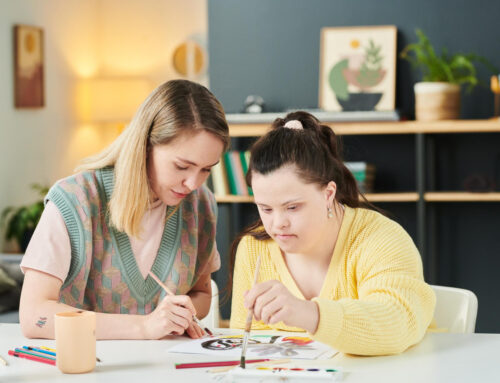
According to the National Center of Substance Abuse and Child Welfare (NCSACW, 2016), approximately 15% of infants in the United States are prenatally exposed to alcohol or illicit drugs. Common types of substances may include the following: cocaine, heroin, inhalants, marijuana, MDMA, methamphetamine, nicotine, and prescriptive (i.e., opioids) or over-the-counter drugs (National Institute on Drug Abuse, 2018). Expecting mothers who allow any dangerous chemical into their body will cause harm to the baby, whether it be short-term or long-term damage. The following consequences should be expected with substance use while pregnant:
- Prematurity and low birth weight
- Neonatal abstinence syndrome – the baby is born addicted to the drug they were exposed to in the womb.
- Fetal Alcohol Syndrome – a disorder that develops in the womb when the fetus is exposed to alcohol.
- Cardiovascular issues
- Behavioral challenges – impulsivity, attention deficits, poor judgment, decreased reasoning skills.
- Lung or respiratory damage – such damage can be short-term or permanent
- Muscle cramping and weakness
- Movement abnormalities
- Stunted growth – substances literally make the bones stop growing.
- Kidney and liver damage
- Mental health problems – depression, anxiety, hallucinations, and paranoia (National Institute on Drug Abuse, 2018)
From a functional standpoint, prenatal drug exposure can severely disrupt a developing child’s life and their ability to participate in meaningful tasks as they age. Example tasks may include:
- Playing with Toys: Physical, cognitive, and emotional disruptions from prenatal substance exposure can drastically warp how an infant interacts with objects in their environment. This may refer to an inability to grasp toys in one or both hands, to initiate grabbing a toy, to understand cause-and-effect with buttons, transitioning from one play task to another, etc. Poor play skills in infancy can lead to delay in reaching pivotal milestones (i.e., rolling, crawling, walking, speaking, coloring, etc.).
- Social Participation: Children with prenatal substance exposure may struggle with creating friendships and appropriately interacting with family members and friends. Causes can include displaying unacceptable behavior (i.e., tantrums, dominating conversations, inattentiveness, etc.), mental illness (i.e., depression, anxiety), and speech or communication delays.
- School Attendance and Assignments: If the child sustained brain damage due to substance exposure in the womb, he/she will most likely experience some escalated challenges in school. Due to inattention, impulsive behavior, poor judgment, and reduced emotional regulation (to name a few), sitting in a desk to listen to a teacher or to complete an assignment becomes more difficult than usual.
- Daily Living Tasks: Behavioral problems, cognitive delays, and developmental milestone deficits can reduce a child’s ability to accomplish necessary living tasks at home. Examples include toileting, self-feeding, dressing, and hygiene tasks.
Pediatric occupational therapy can offer so much for infants and children with prenatal substance exposure. Of course, such OTs are present from day 1 if the newborn goes through the neonatal intensive care unit (NICU). For time’s sake, let’s focus specifically on home health pediatric OT services. Home health OT can occur within the home or in a community setting. Depending on what the child’s goals for therapy are and what their functional deficits look like, OT can offer any of the following: therapeutic exercises, motor learning techniques, gross motor/fine motor activities, daily activity interventions, daily schedules or systems, and caregiver education.
So, how does a child with prenatal substance exposure get started in home health OT? The child is already home from the hospital. Two scenarios will usually play out: the child goes home with the biological parents or the legal and welfare systems place the child into foster care. No matter where the child is placed, intervention services need to begin immediately. It is essential for parents or legal guardians to conduct the following once the newborn comes home:
- Note Observations of the Newborn: For brand-new parents (and even experienced ones), it can be very difficult to visualize what “typical” development looks like. For a newborn with prenatal substance exposure, side effects can be obvious (inconsolable crying, low levels of arousal, breathing problems, movement issues, etc.) or not so blatant in the slightest. If the newborn was exposed to illicit substances or alcohol in the womb, then it is essential to consult with early intervention services so that clinicians may or may not identify problems that you don’t notice.
- Contact Your Local Early Intervention Services: Give early intervention services a call and set up an appointment as soon as possible. Your pediatrician may have some referral information or resources for early intervention care.
- Participate in Free Consultation and Evaluation: Since early intervention services are typically government-funded, the first visit and initial evaluation of your newborn is free. Occupational therapy along with physical therapy, speech therapy, psychiatry, and social work will want to assess your child in order to determine the deficits (if any) and appropriate services for your child.
- Actively Participate in Home Health Services: If your child qualifies for early intervention services, proactively schedule and attend appointments that will usually occur in your home.





